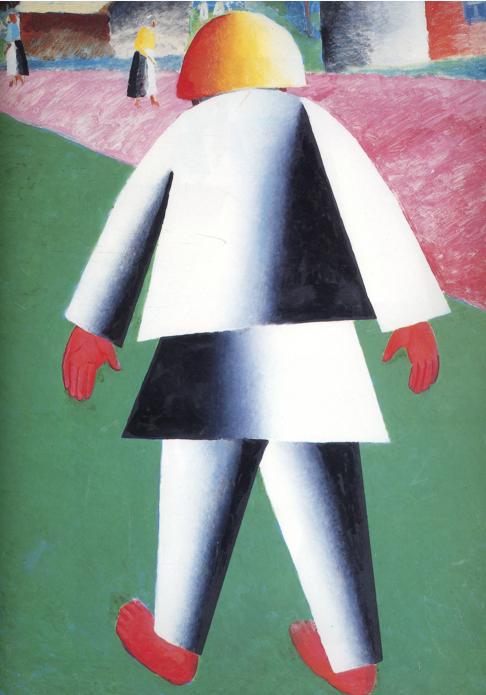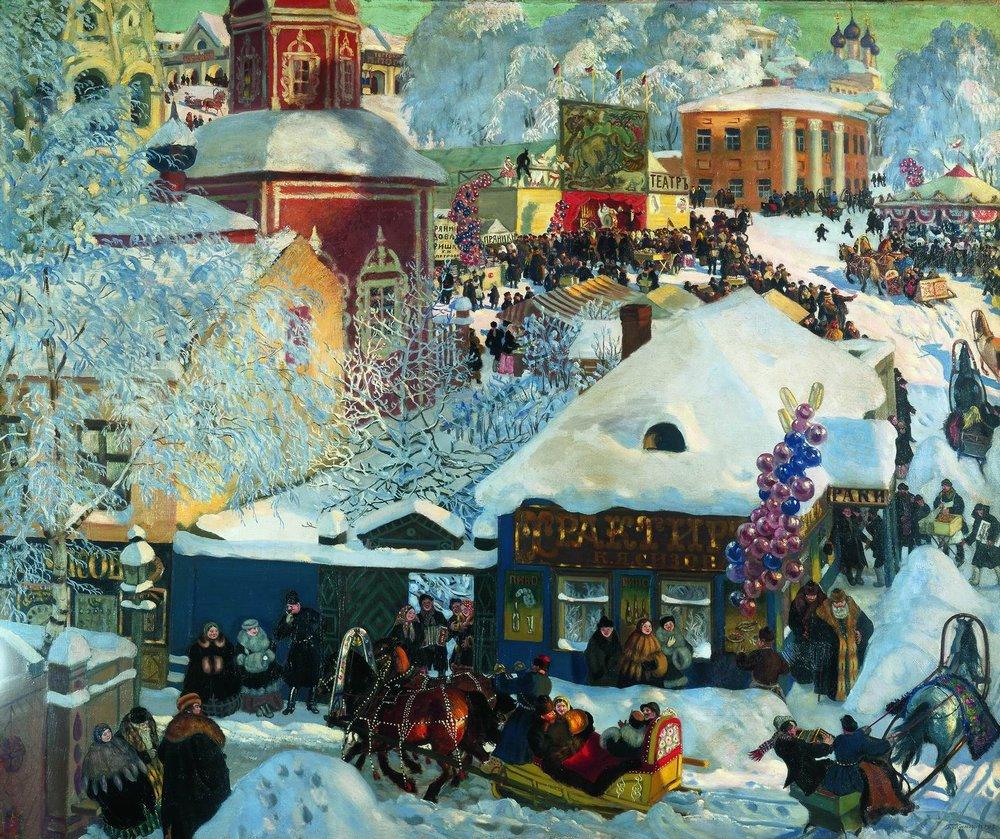|
Raduga Publishers
Raduga Publishers (russian: радуга, English: "rainbow") was a Soviet publishing house of innovative children's books, which has been described as "one of the most important book publishers of its type" during the early twentieth century.Andrea Immel"Cotsen Children's Library: The Anna Baksht Benjamin Family Collection of Raduga Books" ''The Princeton University Library Chronicle'', Vol. 65, No. 2, Winter 2004, pp. 343-356. Retrieved 3 January 2022. History Raduga Publishers was founded in 1922 by the Russian journalist Lev Moisevich Kliachko (1873-1939) who was at one time the chairman of the Committee of Journalists at the State Council. The main office was located in Bolshoy Gostiny Dvor building in Nevsky Prospect, St. Petersburg and the editorial office in the founder's apartment at 14 Stremyannaya Street in the same city. Kliachko originally intended to publish a magazine called Raduga but instead starting publishing picture books with texts and illustrations.Serge ... [...More Info...] [...Related Items...] OR: [Wikipedia] [Google] [Baidu] |
Soviet Union
The Soviet Union,. officially the Union of Soviet Socialist Republics. (USSR),. was a List of former transcontinental countries#Since 1700, transcontinental country that spanned much of Eurasia from 1922 to 1991. A flagship communist state, it was nominally a Federation, federal union of Republics of the Soviet Union, fifteen national republics; in practice, both Government of the Soviet Union, its government and Economy of the Soviet Union, its economy were highly Soviet-type economic planning, centralized until its final years. It was a one-party state governed by the Communist Party of the Soviet Union, with the city of Moscow serving as its capital as well as that of its largest and most populous republic: the Russian Soviet Federative Socialist Republic, Russian SFSR. Other major cities included Saint Petersburg, Leningrad (Russian SFSR), Kyiv, Kiev (Ukrainian Soviet Socialist Republic, Ukrainian SSR), Minsk (Byelorussian Soviet Socialist Republic, Byelorussian SSR), Tas ... [...More Info...] [...Related Items...] OR: [Wikipedia] [Google] [Baidu] |
Kazimir Malevich
Kazimir Severinovich Malevich ; german: Kasimir Malewitsch; pl, Kazimierz Malewicz; russian: Казими́р Севери́нович Мале́вич ; uk, Казимир Северинович Малевич, translit=Kazymyr Severynovych Malevych ., group=nb (Запись о рождении в метрической книге римско-католического костёла св. Александра в Киеве, 1879 год // ЦГИАК Украины, ф. 1268, оп. 1, д. 26, л. 13об—14. – 15 May 1935) was a ... [...More Info...] [...Related Items...] OR: [Wikipedia] [Google] [Baidu] |
Alexander Pushkin
Alexander Sergeyevich Pushkin (; rus, links=no, Александр Сергеевич ПушкинIn pre-Revolutionary script, his name was written ., r=Aleksandr Sergeyevich Pushkin, p=ɐlʲɪkˈsandr sʲɪrˈɡʲe(j)ɪvʲɪtɕ ˈpuʂkʲɪn, a=ru-Pushkin.ogg; ) was a Russian poet, playwright, and novelist of the Romantic era.Basker, Michael. Pushkin and Romanticism. In Ferber, Michael, ed., ''A Companion to European Romanticism''. Oxford: Blackwell, 2005. He is considered by many to be the greatest Russian poetShort biography from University of Virginia . Retrieved 24 November 2006.Allan Reid ... [...More Info...] [...Related Items...] OR: [Wikipedia] [Google] [Baidu] |
Socialist Realism
Socialist realism is a style of idealized realistic art that was developed in the Soviet Union and was the official style in that country between 1932 and 1988, as well as in other socialist countries after World War II. Socialist realism is characterized by the depiction of communist values, such as the emancipation of the proletariat. Despite its name, the figures in the style are very often highly idealized, especially in sculpture, where it often leans heavily on the conventions of classical sculpture. Although related, it should not be confused with social realism, a type of art that realistically depicts subjects of social concern, or other forms of "realism" in the visual arts. Socialist realism was made with an extremely literal and obvious meaning, usually showing an idealized USSR. Socialist realism was usually devoid of complex artistic meaning or interpretation. Socialist realism was the predominant form of approved art in the Soviet Union from its development in ... [...More Info...] [...Related Items...] OR: [Wikipedia] [Google] [Baidu] |
Gosizdat
State Publishing House of the RSFSR (Russian: Госуда́рственное изда́тельство РСФСР), also known as Gosizdat (Госиздат), was the State Publishing House founded in the Russian Soviet Federative Socialist Republic on 21 May 1919. It was to become one of the principal publishing houses in the Soviet Union. In 1930 it was superseded by OGIZ (Unified State Publishing House). History It was formed at the People's Commissariat of Education of the RSFSR on May 20, 1919 in accordance with the Regulations of the All-Russian Central Executive Committee and on the initiative of Anatoly Lunacharsky. The publishing house was headed by an editorial board, the chairman and members of which were provided by the People's Commissariat of Education, appointed by the Council of People's Commissars and approved by the All-Russian Central Executive Commission The decree founding Gosizdat placed all private publishing in Soviet Russia under their control. Alth ... [...More Info...] [...Related Items...] OR: [Wikipedia] [Google] [Baidu] |
Nadezhda Krupskaya
Nadezhda Konstantinovna Krupskaya ( rus, links=no, Надежда Константиновна Крупская, p=nɐˈdʲeʐdə kənstɐnˈtʲinəvnə ˈkrupskəjə; 27 February 1939) was a Russian revolutionary and the wife of Vladimir Lenin. Krupskaya was born in Saint Petersburg to an aristocratic family that had descended into poverty, and she developed strong views about improving the lives of the poor. She embraced Marxism and met Lenin at a Marxist discussion group in 1894. Both were arrested in 1896 for revolutionary activities and after Lenin was exiled to Siberia, Krupskaya was allowed to join him in 1898 on the condition that they marry. The two settled in Munich and then London after their exile, before briefly returning to Russia to take part in the failed Revolution of 1905. Following the 1917 Revolution, Krupskaya was at the forefront of the political scene, becoming a member of the Communist Party's Central Committee in 1924. From 1922 to 1925, she was alig ... [...More Info...] [...Related Items...] OR: [Wikipedia] [Google] [Baidu] |
Lenin
Vladimir Ilyich Ulyanov. ( 1870 – 21 January 1924), better known as Vladimir Lenin,. was a Russian revolutionary, politician, and political theorist. He served as the first and founding head of government of Soviet Russia from 1917 to 1924 and of the Soviet Union from 1922 to 1924. Under his administration, Russia, and later the Soviet Union, became a one-party socialist state governed by the Communist Party. Ideologically a Marxist, his developments to the ideology are called Leninism. Born to an upper-middle-class family in Simbirsk, Lenin embraced revolutionary socialist politics following his brother's 1887 execution. Expelled from Kazan Imperial University for participating in protests against the Russian Empire's Tsarist government, he devoted the following years to a law degree. He moved to Saint Petersburg in 1893 and became a senior Marxist activist. In 1897, he was arrested for sedition and exiled to Shushenskoye in Siberia for three years, where he ... [...More Info...] [...Related Items...] OR: [Wikipedia] [Google] [Baidu] |
New Economic Policy
The New Economic Policy (NEP) () was an economic policy of the Soviet Union proposed by Vladimir Lenin in 1921 as a temporary expedient. Lenin characterized the NEP in 1922 as an economic system that would include "a free market and capitalism, both subject to state control", while socialized state enterprises would operate on "a profit basis". The NEP represented a more market-oriented economic policy (deemed necessary after the Russian Civil War of 1918 to 1922) to foster the economy of the country, which had suffered severely since 1915. The Soviet authorities partially revoked the complete nationalization of industry (established during the period of war communism of 1918 to 1921) and introduced a mixed economy which allowed private individuals to own small and medium sized enterprises, while the state continued to control large industries, banks and foreign trade. In addition, the NEP abolished '' prodrazvyorstka'' (forced grain-requisition) and introduced '' prodnalog' ... [...More Info...] [...Related Items...] OR: [Wikipedia] [Google] [Baidu] |
Boris Kustodiev
Boris Mikhaylovich Kustodiev (russian: Бори́с Миха́йлович Кусто́диев; – 28 May 1927) was a Russian and Soviet painter and stage designer. Early life Boris Kustodiev was born in Astrakhan into the family of a professor of philosophy, history of literature, and logic at the local theological seminary. His father died young, and all financial and material burdens fell on his mother's shoulders. The Kustodiev family rented a small wing in a rich merchant's house. It was there that the boy's first impressions were formed of the way of life of the provincial merchant class. The artist later wrote, "The whole tenor of the rich and plentiful merchant way of life was there right under my nose... It was like something out of an Ostrovsky play." The artist retained these childhood observations for years, recreating them later in oils and water-colours. Art studies Between 1893 and 1896, Kustodiev studied in theological seminary and took private art lessons ... [...More Info...] [...Related Items...] OR: [Wikipedia] [Google] [Baidu] |
Vladimir Konashevich
Vladimir Mikhaylovich Konashevich (russian: Владимир Михайлович Конашевич, May 19, 1888, Novocherkassk—February 27, 1963, Leningrad, now Saint Petersburg) was a Russian graphic artist and illustrator. Among his artwork are scores for ''Manon Lescaut'' and Andersen's ''The Fairy Tales''.''Great Soviet Encyclopedia'' (3rd ed.), vol. 12, p. 605 Konashevich also illustrated the works of Samuil Marshak and issues of the publishing house Academia. His story ''O sebye i svoyom dele'' (''About Me and My Work'') was published in 1968. His illustrations for Daniil Kharms Daniil Ivanovich Kharms (russian: Дании́л Ива́нович Хармс; – 2 February 1942) was an early Soviet-era Russian avant-gardist and absurdist poet, writer and dramatist. Early years Kharms was born as Daniil Yuvach ...' ''игра'' (''Play'') can be seen in ''The Fire Horse: Children's Poems By Mayakovsky, Mandelstam and Kharms'' (tr. Eugene Ostashevsky), New Y ... [...More Info...] [...Related Items...] OR: [Wikipedia] [Google] [Baidu] |
Mstislav Dobuzhinsky
Mstislav Valerianovich Dobuzhinsky or Dobujinsky ( lt, Mstislavas Dobužinskis, August 14, 1875, Novgorod – November 20, 1957, New York City) was a Russian and Lithuanian artist noted for his cityscapes conveying the explosive growth and decay of the early twentieth-century city. Of noble Lithuanian extraction, Dobuzhinsky was born on August 14, 1875 in Novgorod into the family of an army officer. From 1885 to 1887, he attended the Drawing School of the Society for the Promotion of the Artists. Between 1895 and 1899, he read Law at the University of St. Petersburg, simultaneously studying in private studios. After graduating from the University, he was trained from 1899 to 1901 by Anton Ažbe in Munich and Simon Hollósy in Nagybánya (Austria-Hungary). In Munich, he came to be influenced by the Jugendstil. On his return to Russia, he joined the Mir Iskusstva, an artistic circle which idealized the 18th century as the "age of elegance". Dobuzhinsky was distinguished from oth ... [...More Info...] [...Related Items...] OR: [Wikipedia] [Google] [Baidu] |
Boris Zhitkov
Boris Stepanovich Zhitkov (russian: Бори́с Степа́нович Житко́в) ( — 19 October 1938) was a writer from the Russian Empire and later the Soviet Union, mainly known as the author of children's books and the novel ''Viktor Vavich'' about the 1905 Russian Revolution. Biography Zhitkov was born in Novgorod; his father was a mathematics teacher and his mother a pianist. His works include numerous books in which he, in a figurative form, described various professions. His books are based on his rich experience as a sailor, ship captain, scientist, traveler and explorer. Between 1916 and 1924 he was a sailor and, later, a ship's captain. He also worked as a navigator, an ichthyologist, a metal worker, a shipbuilding engineer, a teacher of physics and drafting, and a technical college headmaster. In 1924 Zhitkov started to be published and soon became a professional writer. He is best known for the hugely successful children's travel book ''What I Saw'' (russia ... [...More Info...] [...Related Items...] OR: [Wikipedia] [Google] [Baidu] |







